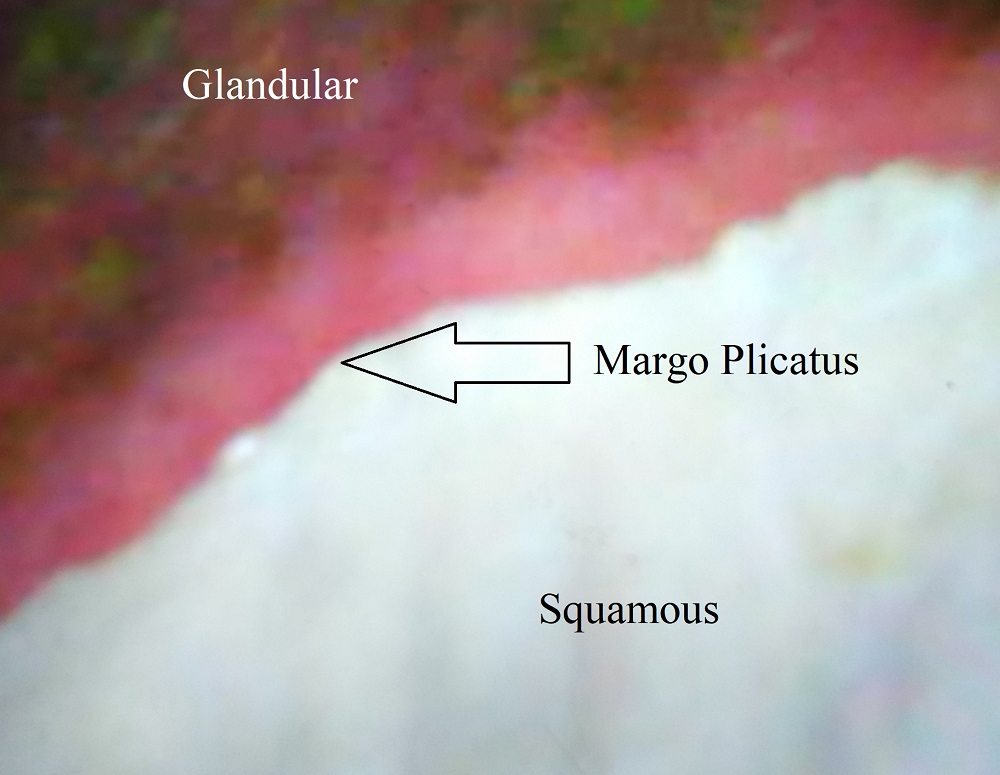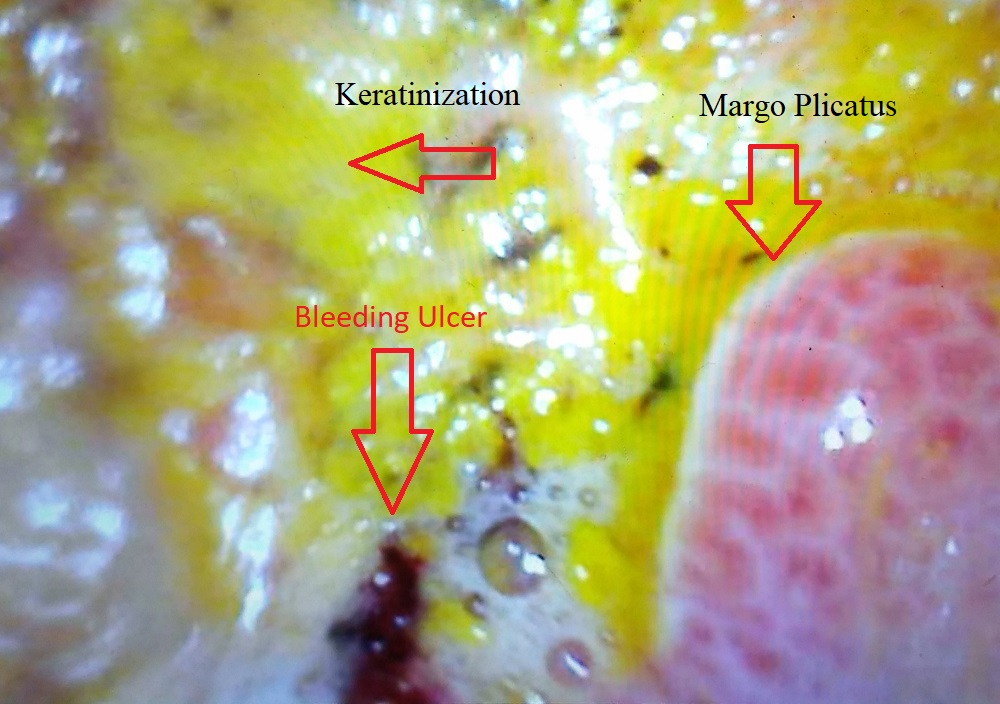Tuesdays with Tony
More and more often I get the question, could my horse’s performance issue, behavior problem, weight loss, or other problem be caused by ulcers? Boy, this is a loaded question for a clinic cat to answer! But I will do my best to guide you to the answer you are looking for and how we can figure out if your horse’s problem is indeed due to ulcers.
Definition of Stomach Ulcers
First, let’s define “stomach ulcers”. Ulcers describe inflammation and a disruption of mucosa of the upper gastrointestinal tract. Contrary to popular belief, ulcers typically occur in the lower esophagus, stomach, and upper small intestine, NOT in the hind gut. Yes, I know you know that ulcers occur in the stomach, but listen to this cat when I tell you, there is little to no research indicating that horses get hind gut ulcers, so let’s just stop that conversation here. I am a man of much wisdom, but my wisdom is always backed by research. Ok, I will get off my soap box now and get down to the nitty gritty of today’s blog, gastric ulcers.

The horse’s stomach is made up of glandular and non-glandular or squamous portions which are separated by a distinct line called the Margo Plicatus. Say that again: Margo Plicatus. Isn’t that just a fun thing to say? Margo Plicatus! Anyway, gastric ulcers can occur anywhere in the stomach, but most commonly occur along the Margo Plicatus on the non-glandular portion of the stomach. They can occur on the glandular portion of the stomach leading into the pylorus and duodenum or upper small intestine as well.
Signs/Symptoms
The fun thing about gastric ulcers is, they can present any way they want. Sometimes they can cause a horse to lose weight, sometimes they can cause a horse to have poor performance, other times they can cause a horse to develop odd behaviors, and sometimes, we may never even suspect a horse has ulcers, but they do. It’s like finding a needle in a haystack, which is always super fun. Who doesn’t love rolling around in the hay? There have been reports of horses who get grumpy when their girth is being tightened. Some colic signs have been associated with gastric ulcers as well. However, it is very rare that severe colic signs are associated with gastric ulcers.
Causes
Gastric acid has an extremely low pH. The glandular portion of the stomach is made to handle the low pH. However, the non-glandular portion of the stomach really does not appreciate constant insult from low pH gastric acid. When a horse is being exercised, pressure within the stomach increases, the stomach collapses and the gastric acid moves around. This causes inflammation of the non-glandular portion of the stomach. Frequent insult to the non-glandular stomach leads in increased inflammation which leads to erosion of the mucosa.
Causes of ulcers in the glandular portion of the stomach are not as well known. However, there is some relation to the chronic use of NSAIDs such as bute and banamine and ulcers in the glandular portion of the horse’s stomach. That being said, there have been many horses who come through my clinic that are on daily NSAIDs and do not have these kinds of ulcers.
Diagnosis
Diagnosing gastric ulcers can only be done by gastric endoscopy. When performing a scope on your horse, my docs take this long tube with a camera on the end of it, they put it up your horse’s nose and then expect them to just swallow it. You won’t get this cat to swallow any cameras; I certainly don’t need anyone knowing what my insides look like. Anywho, so this little camera thing goes down your horse’s esophagus and into the stomach. Then my docs “drive” it around looking at all the different parts of your horse’s stomach. They concentrate mainly on the Margo Plicatus, because as you already learned, that’s where most gastric ulcers occur.

They will then point the camera towards your horse’s pylorus and duodenum where they will look for evidence of ulcers, such as keratinization (yellow phglemy-looking stuff). Oh, I forgot to mention, in order to scope your horse correctly, your horse must be fasted for at least 12 hours. Once your horse’s stomach has been fully inspected, my docs will slowly bring the scope out of the stomach and into the esophagus. They inspect the esophagus for signs of ulcers or any other abnormalities.
While scoping is the only definitive way to diagnose gastric ulcers, a presumptive diagnosis can be made with treatment with medications and resolution of clinical signs. If you want to know for sure though, come in and see me, and get your horse scoped. It’s the only way to go.
Treatment
The goal of treatment for gastric ulcers is to bring the gastric acid to the maintenance level between a pH of 4 and 5. There is only one approved medication for the treatment of gastric ulcers, omeprazole. Omeprazole comes in several different formulations including oral paste and injectable. You all know the oral paste by the trade names GastroGard and UlcerGard. GastroGard is only available through your veterinarian. It is the only oral paste I recommend as it is highly regulated, and its contents are thoroughly monitored in order to ensure the appropriate dose of medication is in each tube.
The injectable omeprazole is a little less common but just as effective as the oral paste and it is given just once a week. It is extremely convenient for those horses who are difficult to dose orally on a daily basis. Next time you see one of my docs, ask them about the injectable omeprazole. Other effective treatments for ulcers include Ranitidine and sucralfate. However, their effectiveness is not as well known or studied and therefore cannot be considered the gold standard, first line treatment or preventative for gastric ulcers.
So, by now you might be thinking your horse may have gastric ulcers, and you may be right. So call my people and they will get you on the schedule for a gastric endoscopy! My docs can determine if your horse is at risk for or currently has gastric ulcers. Treatment isn’t always cheap, but there are many other tricks my docs can talk to you about to help reduce the risk of your horse developing ulcers. Finding out for sure that they don’t have ulcers can save you a lot of money in the long run, too, and who doesn’t want to save money?
Until next week,
~Tony
P.S. If you want to take a deep dive into ulcers, go over to the podcast page and listen to Season 1, Episode 13, Stomach Ulcers. My humans do a good job of explaining the nuts and bolts of ulcers and treatments. It’s a great free resource!
Tuesdays with Tony is the official blog of Tony the Clinic Cat at Springhill Equine Veterinary Clinic in Newberry, Florida. If you liked this blog, please subscribe below, and share it with your friends on social media! For more information, please call us at (352) 472-1620, visit our website at SpringhillEquine.com, or follow us on Facebook!
[jetpack_subscription_form title="Subscribe to Whinny's Wisdoms"]

